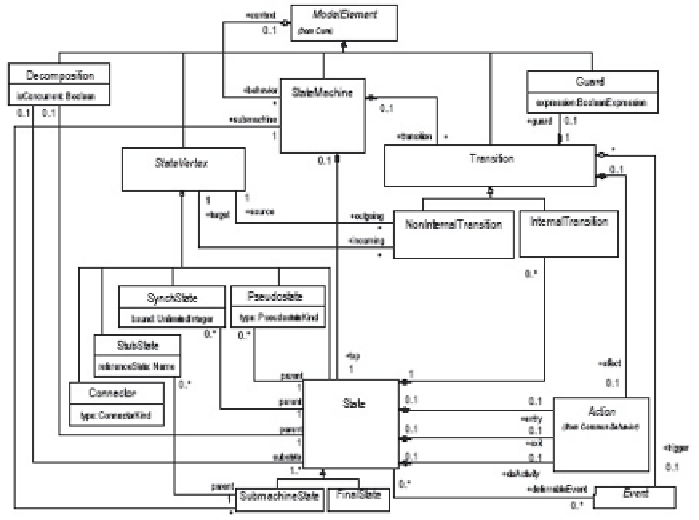Database Reference
In-Depth Information
UML STATE MACHINES METAMODEL
In the next subsections we defi ne a metamodel which captures the syntax, static se-
mantics and dynamic semantics of UML State Machines, bringing into play the architecture
we have described in the previous section.
Base Layer
The Base Layer corresponds to the syntax and static semantics of State Machines since
they capture those aspects that appear to be independent from any particular situation. In
order to represent these features in a similar way as is proposed in the UML Specifi cation,
we propose to use a UML class diagram that we have called
Base Diagram
(see Figure 5),
and a set of Object Constraint Language (OCL) expressions. We have used the class diagram
proposed in the UML Specifi cation (OMG, 2003, pp. 2-141) as a starting point and we have
modifi ed it in several ways, with the main aim of making explicit some restrictions that
State Machines must hold and taking into account the Statecharts metamodel we proposed
in Domínguez et al. (2000a; 2000b) using the Noesis metamodeling technique (Domínguez,
Zapata & Rubio, 1997).
One of the main differences between the class diagram of Figure 5 and the class dia-
gram proposed in OMG (2003) is that we have interpreted the fact of being a simple or a
composite state not as an intrinsic property of the state but as a characteristic derived from
Figure 5: Base Diagram

